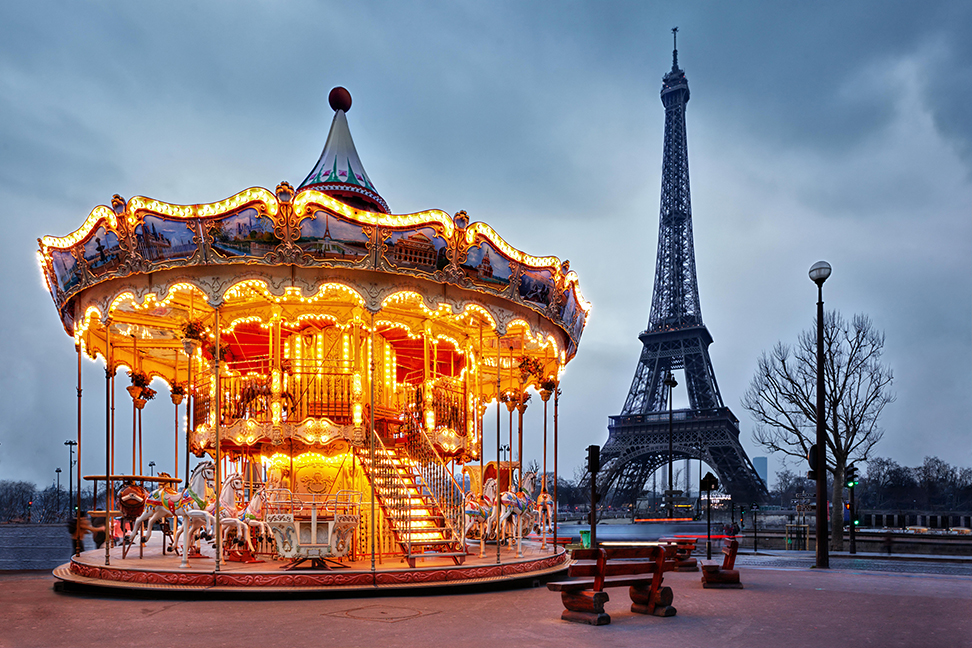A venerated phenomenon of yesteryear is certainly the steam calliope. It was once a well-known fixture in the 19th century and early part of the 20th century. I believe that now in the 21st century, it is widely unknown and obscure.
What is a steam calliope? It is a musical instrument that produces sound through a row of pipes that are connected to a steam boiler. Pressure from the boiler blows steam through metal whistles controlled by valves from a pinned cylinder or a keyboard. Keyboards were made from brass to offset the heat and moisture from the steam.
Background
Early experimentation with steam-driven sound occurred around 1732 and after. Most instruments were invented in Europe during this time, but the calliope is uniquely American in origin. Some of the first prototypes were locomotive whistles. Steam locomotives had plenty of steam to divert a small portion to a whistle that was very loud. A calliope usually has 32 whistles, but some may have as many as 67.
An American, Arthur S. Denny, circa 1850, was working on designs of a steam-driven organ previously conceived. He improved the design and construction. However, he did not patent his invention. Joshua Stoddard built a steam calliope and patented his design in 1855. His daughter demonstrated it in Worchester, Massachusetts on July 4th, 1855. Other names sometimes attributed to the instrument are Steam Organ and Steam Piano. A distinctive feature of the early calliope was, it was an extremely loud instrument and could be heard for miles around.
The early venues for the calliope were riverboats and circuses. Because of its loud sound, one of its early uses was to attract attention and interest in circuses and fairs, thereby bringing people to these attractions.
What’s in a Name
How did the steam calliope get its name? It came from Greek Mythology. There were nine muses. The oldest of the nine muses was Kalliope, the muse of eloquence and ethic poetry. The name meant “beautiful voiced.” The “K” was changed to a “C”, hence the name calliope. The name meaning “beautiful voiced” is ironic because the sound produced by the instrument is shrill and loud, not what most would consider “beautiful.”
River Boats & Circuses
During the paddle-wheel era, many such boats were built for river travel. Most of these boats were on the Mississippi River, but there were also boats on the Missouri River and others. These boats provided an easy and convenient source of steam from their main boiler to run the calliope. It became popular to place a calliope on these boats, not only for entertainment of the passengers but also to announce the arrival of the boat at each stop along the way. Since the sound traveled far, the boats attracted large crowds.

The traveling circus was the other main venue for the calliope. Large circuses like Ringling Brothers and Barnum & Bailey used calliopes for many reasons. It was traditional upon arrival for the circus to have a parade through town to where the “big top” (circus tent) was set up. When on parade, the calliope was mounted on a very fancy, painted and decorated wagon, usually pulled by horses. It had a source of steam mounted on the circus wagon. Some circuses presented a short calliope concert before the main attractions.
How it is Played
The instrument can be played in two ways. It can be played manually by a pianist or organist. The keyboard is set up like a piano. It can also be played mechanically instead of an actual player. Around 1900, calliopes were beginning to use a box-drum or a roll-like a player piano. Some calliopes have the capability of both methods of playing while others have only one method.
The whistles that produce the sound from the steam going through them are tuned to a chromatic scale. The whistles are quite difficult to keep accurately tuned due to the variable temperature of the steam.
Merry-Go-Rounds/Carousels
There are other venues for the calliope besides riverboats and circuses. They are spread across the nation in many cities and towns. Calliopes are the source of music on many famous carousels. These special calliopes, for the most part, post-date the calliopes of the era of the riverboats and some of the circus instruments as well. Of course, not all carousels have a calliope, but those that do have an unmistakable sound.

Some carousels are quite old and acquire a reputation and a sizeable following from devoted fans. Some of the most famous have calliopes. Locally, we have some famous carousels, including one at the San Francisco Zoo (as a young boy I road on that one several times). There is one at the Oakland Zoo, and one at Tilden Park in the Berkeley hills. The one at the San Francisco Zoo is over 90 years old and has been refurbished and restored over the years to its original state and beauty. The carousel at Tilden Park was built in 1911. In 1976 it was named a historic place by the National Registry of Historic Places. It uses calliope style music
The Oakland Zoo carousel uses calliope style music also. We are fortunate to have historic carousels in the Bay Area for all to enjoy at reasonable prices. Take your kids for a carousel ride. I know they will enjoy the experience.
Modern Uses
The Beatles used tapes of calliope music in Sargent Peppers Lonely Hearts Club Band. Smokey Robinson’s, The Tears of a Clown featured a circus calliope. The Rock Band, Kiss, used it in Flaming Youth. Madonna used the calliope in her girlie show in the song, Holliday. Sponge Bob Square Pantsused it in the episode Free Samples. These are just a few examples of modern-day usage of calliope style music in contemporary times. Modern-day calliopes use compressed air rather than steam.
If you are traveling and contemplate a riverboat cruise on the Mississippi River or other great American Rivers, be sure to investigate and listen to the music of yesteryear on an authentic steam calliope. Take in the rare experience of a genuine paddle-wheel boat calliope concert. I’m sure you’ll enjoy it.
Visit our website at www.danvilleband.org for up-to-date information about the Danville Community Band or reach me at banddirector01@comcast.net.
Leave a Reply